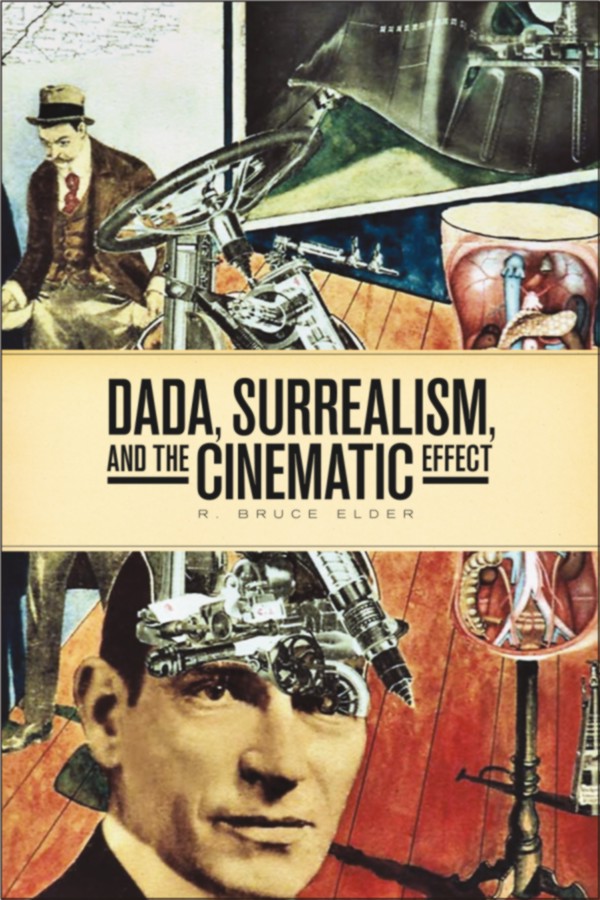De Ridder Retrospective (1983) [NL/EN]
Filed under artist publishing, catalogue | Tags: · art, fluxus, performance, radio art, theatre

Book with comic strips, conversations and a chronology of Dutch radio art maker, magazine editor and Fluxus member Willem de Ridder, issued to accompany his retrospective at the Groningen Museum in the Summer of 1983. The part in English starts on page 34.
“In 1961, Willem de Ridder set up Mood Engineering Society together with Peter Schat, Wim T. Schippers, Misha Mengelberg, Jaap Spek, Louis Andriessen and Govert Jurriaanse, most of them avant-garde musicians. Among their first activities was De Ridder’s Papieren konstellaties [Paper Constellations], which could be ‘constructed’ anywhere as long as an audience was present to participate in this so-called PK theatre and help determine its appearance. Traditional theatre, it was felt, had to be given the boot. It had remained stuck too long in the renaissance model of the proscenium stage and should be replaced by dynamic, mobile installations, variable acoustics and–following John Cage–the theatricality of silence, which, it was anticipated, would make the audience restless. The group performed three concerts in February 1962. Fully in the spirit of Fluxus, the hierarchy between artist/composer and performer as well as between performer and audience was abolished. Objects fulfilling a clearly visual function, such as a tape recorder, were featured in the concerts. The introduction of a visual element suited the ambition to destroy the traditional boundaries between the disciplines of art, following Cage’s example. After the concerts, MES was dissolved, despite the fact that various museums in the country were offering them the opportunity to put on new performances. De Ridder became a representative of Fluxus for the Netherlands in 1963.” (Marga van Mechelen, 2006)
Written and compiled by William Levy and Willem de Ridder
Publisher Groninger Museum, Groningen, 1983
ISBN 906477062X, 9789064770623
80 pages
via thepiratebay.worm.org
PDF (33 MB)
Comment (0)R. Bruce Elder: Dada, Surrealism, and the Cinematic Effect (2013)
Filed under book | Tags: · alchemy, art history, avant-garde, chance, cinema, collage, consciousness, dada, dreams, film, film history, language, mathematics, occultism, sexuality, spiritualism, surrealism, theory

“This book deals with the early intellectual reception of the cinema and the manner in which art theorists, philosophers, cultural theorists, and especially artists of the first decades of the twentieth century responded to its advent. While the idea persists that early writers on film were troubled by the cinema’s lowly form, this work proposes that there was another, largely unrecognized, strain in the reception of it. Far from anxious about film’s provenance in popular entertainment, some writers and artists proclaimed that the cinema was the most important art for the moderns, as it exemplified the vibrancy of contemporary life.
This view of the cinema was especially common among those whose commitments were to advanced artistic practices. Their notions about how to recast the art media (or the forms forged from those media’s materials) and the urgency of doing so formed the principal part of the conceptual core of the artistic programs advanced by the vanguard art movements of the first half of the twentieth century. This book, a companion to the author’s previous, Harmony & Dissent, examines the Dada and Surrealist movements as responses to the advent of the cinema.”
Publisher Wilfrid Laurier University Press, Waterloo, 2013
Film and Media Studies series
ISBN 9781554586257, 1554586259
x+765 pages
Reviews: John W. Locke (Canadian J of Film Studies 2014), Robin Walz (Canadian J of History 2014), Bart Testa (U Toronto Quarterly 2015).
PDF (8 MB, updated on 2019-12-14)
EPUB (added on 2019-12-14)
Environmental Humanities, 8(1): Multispecies Studies (2016)
Filed under journal | Tags: · animal, biology, botany, environment, ethnography, multispecies

“The emerging field of multispecies studies, grounded in passionate immersion in the lives of fungi, microorganisms, animals, plants, and others, is opening up novel ways of engaging with worlds around us. This issue brings together some of the leading scholars in this field to explore what is at stake—epistemologically, politically, ethically—for different forms of life caught up in diverse relationships of knowing and living together. The collection takes us into the worlds of sheep and shepherds; of stones, worms, salmon, and forest-devouring beetles; of viruses and their elephants; of seals, crows, and lava flows in Hawaii; and finally of frogs-as-pregnancy-tests and possible agents of pathogenic fungal spread. Each of the contributors explores what difference curious and careful attention to others might make in our efforts to inhabit and coconstitute flourishing worlds in these difficult times.”
Edited by Thom van Dooren, Ursula Münster, Eben Kirksey, Deborah Bird Rose, Matthew Chrulew, and Anna Lowenhaupt Tsing
Publisher Duke University Press, May 2016
Creative Commons license CC BY-NC-ND 3.0
ISSN 2201‐1919
148 pages
HT marcelo
HTML, PDFs (updated on 2018-4-26)
single PDF (2 MB)

